Foreword
The 5th Training Course on Impact Assessments for Heritage (IAH) took place in Shanghai and Zhenze Waterfront Town from 15th to 26th, October 2018. It was co-organized by WHITRAP-Shanghai and ICCROM with the support of IUCN, the Leadership Training Centre of Urban-Rural Development of Tongji University, Tongji University, Tongji Urban Planning and Design Institute, and Zhenze Town Government.
Recognizing the vital role of impact assessments in heritage planning and management process, the course aimed to lay equal emphasis on both the theoretical and practical aspects of impact assessments. Another advantage of this course is to stress the linkage of culture and nature, and the trainees will be equipped with the knowledge in all forms of impact assessments including Heritage Impact Assessments (HIA), Strategic Environmental Assessments (SEA), and Environmental Impact Assessments (EIA). Besides, legislation was included to be discussed and the legal framework of IAH was introduced to enable participants to create a better heritage management system. 22 trainees from 17 countries and 11 resource persons participated in this activity, sharing their experiences on management of heritage sites in general, and World Heritage properties in particular.
In terms of the overall structure of the course, it consisted of three parts: lectures, field studies, and presentations. The biggest difference in this session of training was that the IA process were illustrated with practical examples not only in culture but also in nature. Two heritage impact assessments reports on Old Town of Galle and its Fortification and Villa Adriana were explained in detail with the steps of implementation. In order to benefit the trainees, cases in relation to heritage impact assessments were shared, and in-depth thoughts from senior resource persons were presented. Moreover, trainees were divided into four groups to work on two cases in Zhenze Historic Waterfront Town. The results of the two exercises were presented on site and at the course’s venue respectively; our resource persons also joined their presentations and made valuable comments on their work. More information on lectures and field studies are available in the next columns.
Lectures
Impact Assessment is a tool to enhance the management and conservation at heritage site. Therefore, main theory on management was delivered. Gamini Wijesuriya, the special advisor of WHITRAP, firstly gave the participants an introductory lecture which elucidated the concept of HIA under the umbrella of the current discourse on conservation and management of heritage. And then he focused on World Heritage in his second lecture, bringing all participants a more in-depth understanding of World Heritage concepts, working methods, management/ monitoring requirements, and the place that offers for Heritage Impact Assessments.
Yun Zhao, the deputy director of Chinese Academy of Cultural Heritage, introduced China’s experience of World Cultural Heritage conservation and monitoring. She clarified the unified arrangements of the Sate Council and explained the responsibilities of SACH, provincial administration of cultural heritage, local people’s governments, as well as World Cultural Heritage conservation organizations respectively. She also explained the World Heritage management and monitoring framework which had been preliminary established to provide technical support to decision-making of World Cultural Heritage conservation and management.
Peng Luo, a researcher of Chengdu Institute of Biology (Chinese Academy of Science), discussed the concepts, procedures, and implementation of SEA and EIA for World Heritage with examples from China and other countries. Some basic methods and technologies were summarized; the requirements for environment management plan were elucidated; the legal and policy context of SEA and EIA in China was stated.
Jianwei Ye, the Vice Chief Engineer of Shanghai Tongji Urban Planning and Design Institute, talked about the three phases of development of heritage impact assessments, the general situation of the impact assessments and the trend of application, as well as the current condition of implementing impact assessments in the context of China in terms of its developing trend, main contents, procedures, and typical cases.
A series of four lectures was given by Sarah Court, which firstly provided an overview of the concept of HIA in the evolving world heritage context. The emergent and development of this relatively new form of impact assessment were unpacked. The following three presentations illustrated the complete HIA process, using case studies from World Heritage properties. The first presentation looked at the early steps of HIA including identifying the multidisciplinary team that would undertake the HIA and the involved stakeholders. The second presentation intended to facilitate the trainees’ understanding of the heritage property’s values. How to identify the full range of values as well as the associated tangible and intangible attributes were revealed. The last presentation focused on the analysis of proposed projects; the methodology for measuring the impacts (positive/negative, direct/indirect) was unveiled, and the potential options were discussed.
Feng Song, an associate professor of Peking University, talked about the management, planning, and assessment of Chinese protected area. His lecture included three parts: 1) current situation analysis in terms of protected area’s legal system and management system, the challenges faced by protected area, and current situation of assessment; 2) the importance of assessments on planning; 3) the operational guideline, whose framework was exemplified by scenic areas. In addition, he used a case study of West Lake, Hangzhou to further illustrate the implementation of impact assessments in practice.
The last lecture titled as “HIA Practices in China” was given by Lei Teng, the Chief Engineer Researcher of China Cultural Heritage Information and Consulting Center. The general background, the HIA procedures in China, and the relevant practices in recent years were elaborated. A case of Shenli Plaza project in the buffer zone of Johkang Temple was discussed in detail to promote a more in-depth understanding for trainees.
Through the lectures of a wide range of topics and various case studies from different regions, the trainees learned the basic and useful knowledge of IAH including its concept, development, process, implementation, and so on, which would lay a sound foundation for their follow-up practical exercises in Zhenze.
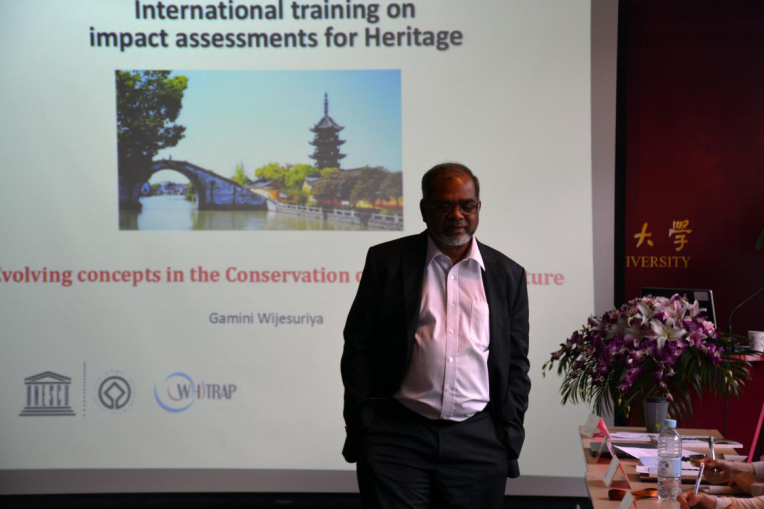
Gamini Wijesuriya © Xiresangpei/ WHITRAP 2018
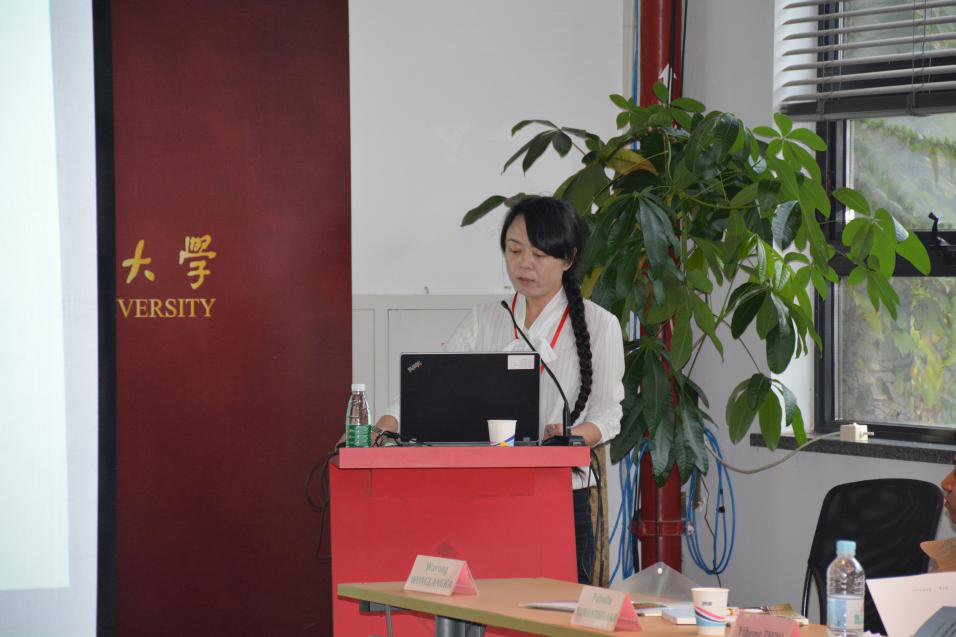
Yun Zhao © Xiresangpei/ WHITRAP 2018
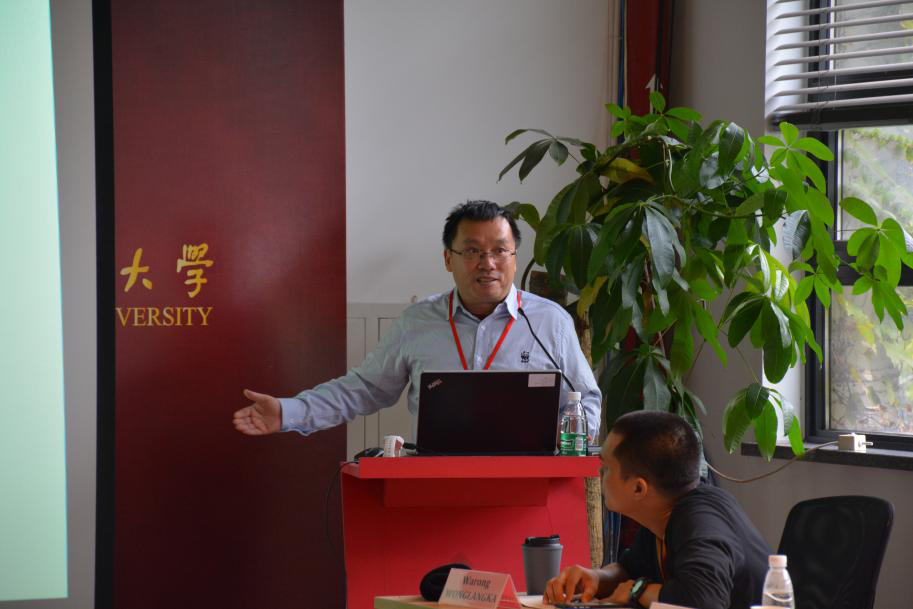
Peng Luo © Xiresangpei/ WHITRAP 2018
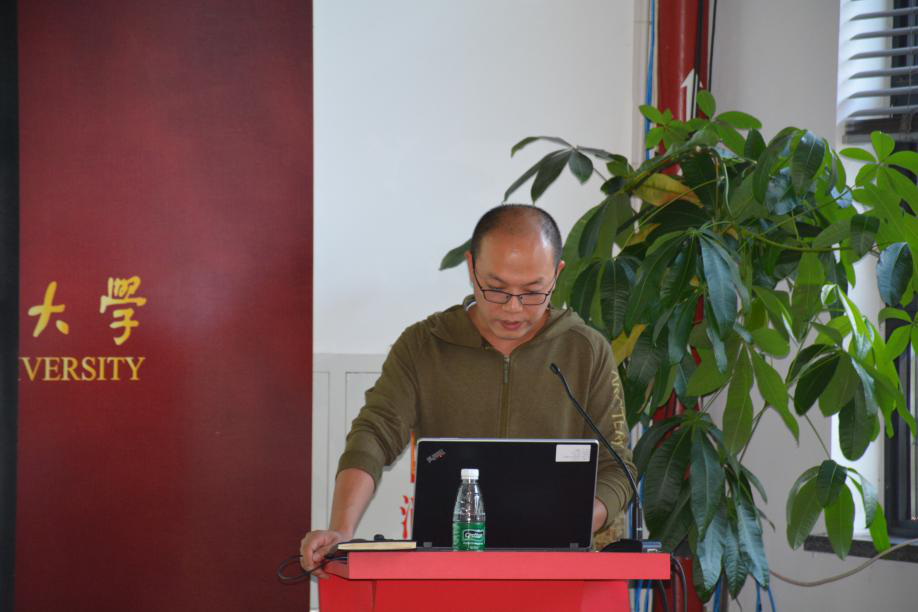
Jianwei Ye © Xiresangpei/ WHITRAP 2018
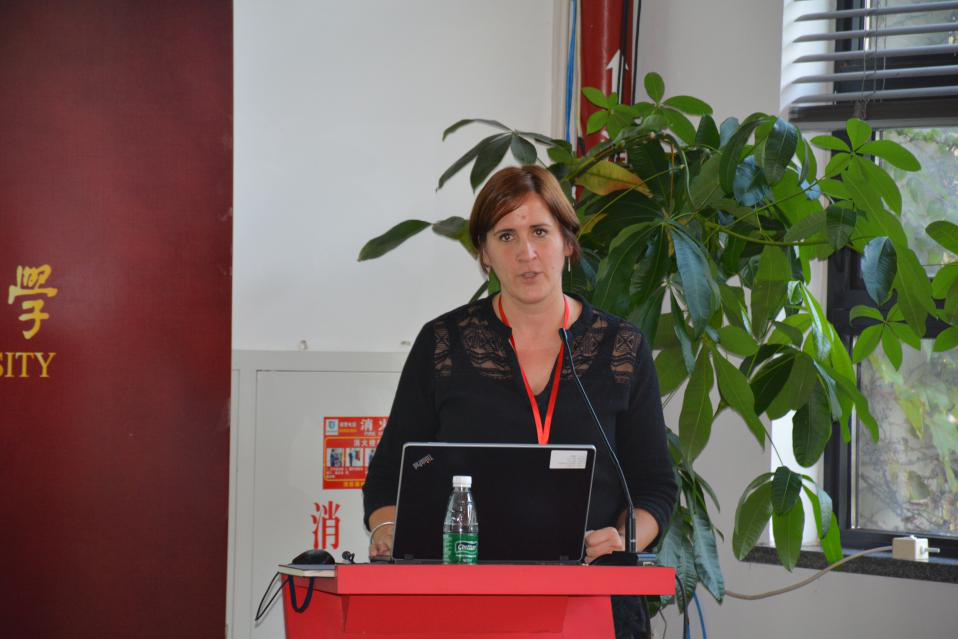
Sarah Court © Xiresangpei/ WHITRAP 2018
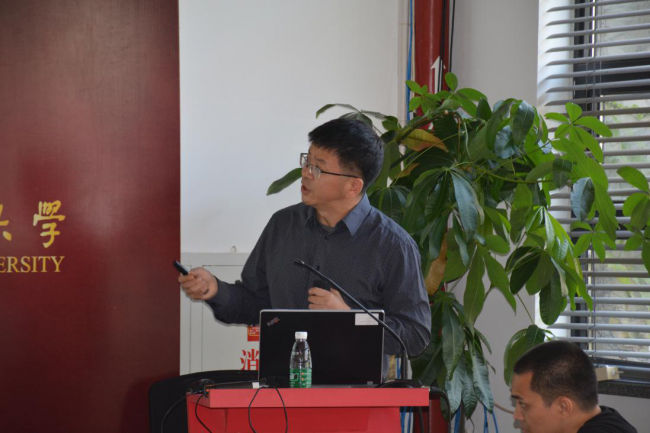
Song Feng © Xiresangpei/ WHITRAP 2018
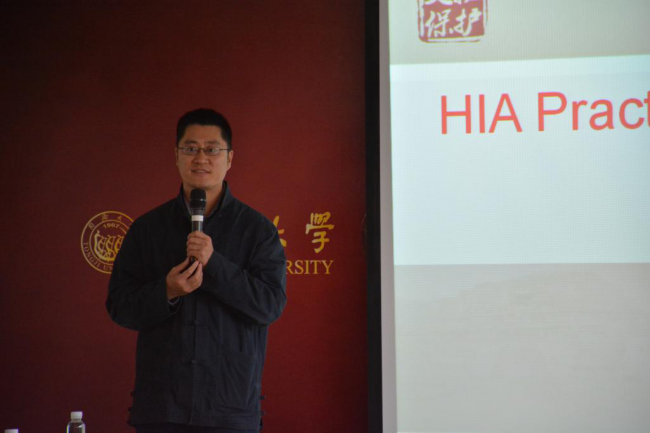
Lei Teng © Xiresangpei/ WHITRAP 2018


